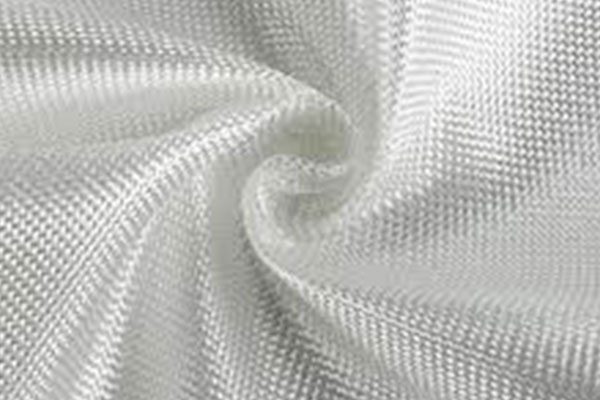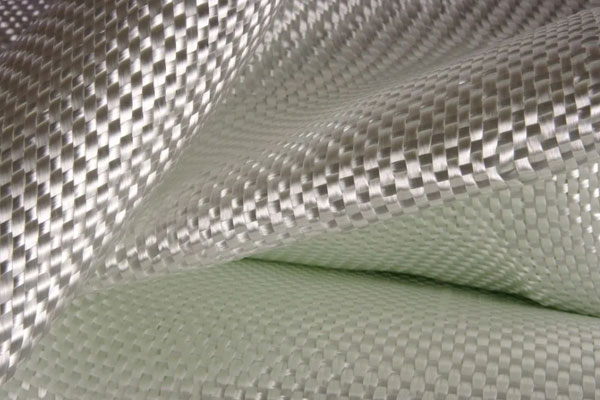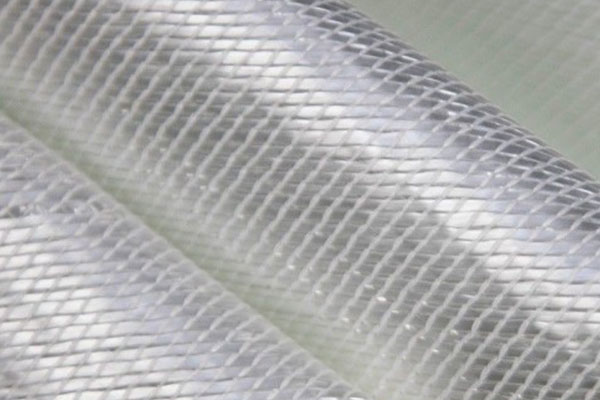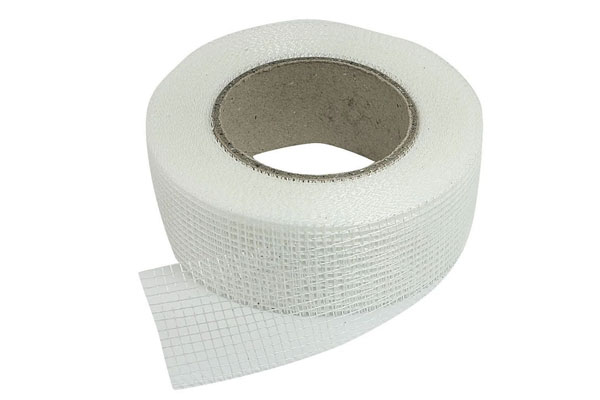ผ้าทอใยแก้ว เป็นวัสดุสิ่งทอประสิทธิภาพสูงที่ผลิตจากเส้นใยแก้วต่อเนื่องที่สานกันเป็นมัด มีการใช้งานอย่างแพร่หลายในอุตสาหกรรมหลากหลายประเภท เนื่องจากมีอัตราส่วนความแข็งแรงต่อน้ำหนักที่ยอดเยี่ยม ความคงตัวของขนาด และความทนทานต่ออุณหภูมิและการกัดกร่อนทางเคมี.
การแนะนำประสิทธิภาพของผลิตภัณฑ์
ผ้าใยแก้วผลิตขึ้นด้วยเทคนิคการทอที่แม่นยำ มีให้เลือกหลายน้ำหนัก ลวดลายการทอ และพื้นผิว ทำให้สามารถสร้างโซลูชันที่ปรับแต่งได้สูงในอุตสาหกรรมต่างๆ ตั้งแต่การบินและอวกาศ การก่อสร้าง การเดินเรือ อิเล็กทรอนิกส์ และยานยนต์.
2. 🎯 แอปพลิเคชันหลัก
ผ้าทอใยแก้วใช้เป็นวัสดุเสริมแรงหรือชั้นกั้นใน:
-
การผลิตวัสดุผสม (เช่น แผ่น FRP, ท่อ, ถัง, เรือ)
-
ฉนวนไฟฟ้า (ห่อหุ้มหม้อแปลงไฟฟ้า, แผ่นรองพื้น PCB)
-
ฉนวนกันความร้อน (แผ่นกันความร้อนป้องกัน, แผ่นบุภายในห้องเครื่อง)
-
การก่อสร้าง (แผ่นเมมเบรนสำหรับหลังคา, วัสดุเสริมแรงสำหรับฉาบปูน, แผ่นผนัง)
-
การบินและอวกาศ (แผงภายในเครื่องบิน ท่อลม และฝาครอบต่างๆ)
-
ยานยนต์ (แผ่นพรีเพรกไฮบริดคาร์บอนไฟเบอร์, แผ่นกันความร้อนท่อไอเสีย)
-
การป้องกันการกัดกร่อน (วัสดุบุภายในสำหรับถังและท่อเหล็ก)
3. 🛠️ คุณสมบัติและข้อดีของผลิตภัณฑ์
| คุณสมบัติ | คำอธิบาย |
|---|---|
| อัตราส่วนความแข็งแรงต่อน้ำหนักสูง | เหมาะอย่างยิ่งสำหรับการเสริมความแข็งแรงของโครงสร้างโดยไม่เพิ่มปริมาณเนื้อวัสดุ |
| ความเสถียรของมิติที่ยอดเยี่ยม | รักษารูปทรงได้ภายใต้ความเครียดทางความร้อนหรือทางกลสูง |
| ความต้านทานความร้อน | สามารถทำงานได้อย่างมีประสิทธิภาพที่อุณหภูมิสูงถึง 550°C (ขึ้นอยู่กับเกรด) |
| ทนต่อสารเคมี | ทนต่อกรด ด่าง ตัวทำละลาย และความชื้น |
| ฉนวนไฟฟ้า | มีคุณสมบัติเป็นฉนวนไฟฟ้าสูงและมีค่าการนำไฟฟ้าต่ำ |
| สารหน่วงไฟ | โดยธรรมชาติแล้วไม่ติดไฟ และตรงตามมาตรฐานความทนไฟ |
| ความทนทานต่อรังสียูวีและสภาพอากาศ | เหมาะสำหรับการใช้งานกลางแจ้งในระยะยาว หากมีการเคลือบผิวที่เหมาะสม |
| ความอเนกประสงค์ | สามารถใช้ได้กับโพลีเอสเตอร์ ไวนิลเอสเตอร์ อีพ็อกซี ฟีนอลิก และเรซินอื่นๆ |
4. 🔍 เอกสารข้อมูลทางเทคนิค (TDS)
| คุณสมบัติ | มูลค่า (โดยทั่วไป) | วิธีทดสอบ |
|---|---|---|
| ประเภทเส้นใย | อี-กลาส | – |
| สไตล์การทอ | ผ้าเรียบ / ผ้าทวิล / ผ้าซาติน | – |
| ประเภทเส้นด้าย | EC9 / DE75 / DE110 เป็นต้น. | – |
| น้ำหนักผ้า | 200 – 1200 กรัม/ตร.ม. | ASTM D3776 |
| ความหนา | 0.1 – 1.5 มม. | ASTM D1777 |
| ความแข็งแรงดึง (แนวขวาง/แนวทแยง) | 300 – 900 N/25 มม. | ASTM D5035 |
| การยืดตัวเมื่อขาด | < 4% | ASTM D5035 |
| ปริมาณความชื้น | ≤ 0.2% | ASTM D4029 |
| อุณหภูมิในการทำงาน | -100°C ถึง +550°C | – |
| ความแข็งแรงของฉนวนไฟฟ้า | ≥ 6 kV/mm | แอสทรอส ดี149 |
| ความเข้ากันได้ของเรซิน | โพลีเอสเตอร์, อีพ็อกซี, ฟีนอลิก, ไวนิลเอสเตอร์ | – |
| ความต้านทานต่อเปลวไฟ | ดับไฟได้เอง (E-glass) | เป็นไปตามมาตรฐาน UL 94 V0 |
| ความกว้างม้วนมาตรฐาน | 1000 มม. / 1250 มม. / 2000 มม. | – |
| ความยาวม้วน | สามารถปรับแต่งได้ (โดยทั่วไป 50–200 เมตร) | – |
5. 🧬 ลวดลายการทอที่มีให้เลือก
-
ทอธรรมดา
-
รูปแบบการสานสลับบนล่าง
-
โครงสร้างที่มั่นคงและสมดุลที่สุด
-
ใช้งานง่ายและไม่ค่อยเป็นขุย
-
-
การทอแบบทวิลล์
-
ลวดลายแนวทแยง
-
ยืดหยุ่นและทิ้งตัวสวยงาม
-
พบได้ทั่วไปในแม่พิมพ์รูปทรงซับซ้อน
-
-
การทอแบบซาติน (เช่น 4H/8H)
-
พื้นผิวเรียบมาก
-
ปรับตัวได้ดี
-
เหมาะสำหรับงานเครื่องสำอาง
-
6. 🆚 ผ้าใยแก้วเทียบกับวัสดุอื่นๆ
| คุณสมบัติ | ผ้าใยแก้ว | ผ้าคาร์บอนไฟเบอร์ | ผ้าเคฟลาร์ | แผ่นอลูมิเนียม |
|---|---|---|---|---|
| ความแข็งแรง/น้ำหนัก | สูง | สูงมาก | สูง | ปานกลาง |
| ความต้านทานความร้อน | สูง | ปานกลาง | ปานกลาง | ต่ำ |
| ค่าใช้จ่าย | ปานกลาง | สูง | สูง | ต่ำ |
| ฉนวนไฟฟ้า | ยอดเยี่ยม | การนำไฟฟ้า | ดี | การนำไฟฟ้า |
| ทนต่อสารเคมี | ยอดเยี่ยม | ปานกลาง | ยอดเยี่ยม | ยากจน |
| ความสามารถในการติดไฟ | ไม่ติดไฟ | ไวไฟ | ไม่ติดไฟ | ไวไฟ |
7. 🧊 คำแนะนำในการจัดเก็บและการใช้งาน
-
เก็บในที่แห้งและเย็น (15–30°C)
-
หลีกเลี่ยงการสัมผัสรังสียูวีและความชื้นโดยตรง
-
เก็บไว้ในบรรจุภัณฑ์เดิมจนกว่าจะใช้งาน
-
ควรสวมถุงมือเพื่อป้องกันการระคายเคืองผิวหนัง
-
ใช้ใบมีดคมๆ หรือคัตเตอร์โรตารี่ตัดเพื่อให้ได้ขอบที่เรียบเนียน
8. 🧪 การเคลือบและผนึกด้วยเรซิน
ผ้าใยแก้วสามารถนำไปใช้ได้ในกรณีต่อไปนี้:
-
การขึ้นรูปด้วยมือ หรือการพ่นขึ้นรูป
-
การให้สารละลายทางหลอดเลือดดำด้วยระบบสุญญากาศ (VARTM)
-
การขึ้นรูปด้วยแรงดึง / การพันเส้นใย
-
การเคลือบด้วยพรีเพรก (โดยใช้เรซินอีพ็อกซีขั้น B)
ระบบเรซินสามารถส่งผลกระทบอย่างมากต่อคุณสมบัติของชิ้นส่วนสำเร็จรูป สำหรับการใช้งานที่อุณหภูมิสูง แนะนำให้ใช้ระบบอีพ็อกซีหรือฟีนอลิก.
9. ⚠️ ข้อควรระวังด้านความปลอดภัย
-
โปรดใช้ความระมัดระวังเพื่อหลีกเลี่ยงการสัมผัสกับผิวหนังหรือฝุ่นละอองในอากาศ
-
สวมอุปกรณ์ป้องกันส่วนบุคคลที่เหมาะสม (ถุงมือ แว่นตา หน้ากากกันฝุ่น)
-
ผ่าตัดในบริเวณที่มีอากาศถ่ายเทสะดวก หรือใต้เครื่องดูดควัน
-
ห้ามเผาหรือทำให้ผ้าใยแก้วละลาย (เส้นใยแก้วอาจละลายและทำให้เรซินระเหยได้)
10. 📦 ตัวเลือกบรรจุภัณฑ์
-
ม้วนกระดาษคราฟท์
-
ฟิล์ม PE พร้อมซองสารดูดความชื้น
-
บรรจุลงบนพาเลทพร้อมอุปกรณ์ป้องกันขอบ
-
ฉลากแบบกำหนดเองพร้อมระบบติดตามล็อตและข้อมูลจำเพาะ
11. ❓ คำถามที่พบบ่อย
คำถามที่ 1: ผ้าใยแก้วสามารถใช้กลางแจ้งได้หรือไม่?
ใช่แล้ว หากใช้เมทริกซ์เรซินที่เหมาะสมหรือสารเคลือบป้องกันรังสียูวี ก็จะสามารถใช้งานได้ดีภายใต้สภาพแวดล้อมกลางแจ้ง.
คำถามที่ 2: ผ้าใยแก้วกันน้ำได้หรือไม่?
เส้นใยแก้วเองนั้นไม่ทำปฏิกิริยาและกันความชื้นได้ อย่างไรก็ตาม เนื้อผ้าโดยรวมไม่สามารถกันไอน้ำได้ เว้นแต่จะเคลือบด้วยเรซิน.
คำถามที่ 3: สามารถทาสีได้หรือไม่?
ใช่ค่ะ หลังจากเรซินแข็งตัวแล้ว สามารถขัดและทาสีลามิเนตโดยใช้สีเคลือบที่เหมาะสมได้ค่ะ.
คำถามที่ 4: ผลิตภัณฑ์มีอายุการเก็บรักษานานเท่าใด?
หากเก็บรักษาอย่างถูกวิธี ผ้าทอใยแก้วจะมีอายุการใช้งานไม่จำกัด อย่างไรก็ตาม ผ้าพรีเพรกอีพ็อกซี่โดยทั่วไปจะมีอายุการใช้งาน 6-12 เดือน ขึ้นอยู่กับสภาพการเก็บรักษา.
ผ้าทอไฟเบอร์กลาส
ชุด :
ผ้าใยแก้ว >แอปพลิเคชัน
อวกาศยาน: ใช้ในโครงสร้างคอมโพสิตน้ำหนักเบา เช่น ปีก ชิ้นส่วนลำตัวเครื่องบิน และชิ้นส่วนภายใน ยานยนต์: ผ้าใยแก้วเย็บใช้ในแผงตัวถัง แชสซีเสริมแรง และชิ้นส่วนโครงสร้างอื่นๆ ในอุตสาหกรรมยานยนต์ ทางทะเล: เหมาะสำหรับใช้ในตัวเรือ ดาดฟ้า และโครงสร้างทางทะเลอื่นๆ ที่ต้องการความแข็งแรง ความทนทานต่อน้ำ และการกัดกร่อน พลังงานลม: ใช้ในการสร้างใบพัดกังหันลม ซึ่งความแข็งแรงสูงและน้ำหนักเบาเป็นสิ่งสำคัญ อุปกรณ์กีฬา: ใช้เสริมความแข็งแรงให้กับอุปกรณ์ต่างๆ เช่น เฟรมจักรยาน ไม้สกี และสโนว์บอร์ด การก่อสร้าง: ใช้สำหรับเสริมความแข็งแรงให้กับโครงสร้างคอนกรีตหรือวัสดุก่อสร้างคอมโพสิตอื่นๆ.
ชื่อแบรนด์ :
ทีเอฟคอมโพสิต
ชื่อผลิตภัณฑ์ :
ผ้าทอไฟเบอร์กลาส
คำถามที่พบบ่อย
ถาม :
ผ้าใยแก้วทอสามารถตัดให้ได้ความกว้างหรือรูปทรงตามต้องการได้หรือไม่?
ตอบ :
ใช่แล้ว ผ้าใยแก้วสามารถปรับแต่งได้ง่ายโดยใช้เครื่องตัดอุตสาหกรรม เครื่องตัดเลเซอร์ หรือการตัดแต่งด้วยมือ สำหรับงานที่ต้องการความแม่นยำสูง (เช่น การผลิตแผงวงจรพิมพ์หรือการใช้งานในอุตสาหกรรมการบินและอวกาศ) แนะนำให้ใช้การตัดด้วยระบบวอเตอร์เจ็ทหรือเครื่อง CNC นอกจากนี้ ผู้ผลิตยังสามารถจัดส่งม้วนผ้าที่มีความกว้างตามสั่งได้อีกด้วย.
ถาม :
ผ้าใยแก้วปลอดภัยต่อการสัมผัสหรือการใช้งานในสภาพแวดล้อมภายในอาคารหรือไม่?
ตอบ :
โดยทั่วไปแล้วใช่ แต่การสัมผัสโดยตรงอาจทำให้เกิดการระคายเคืองผิวหนังเล็กน้อยเนื่องจากเส้นใยแก้วละเอียด แนะนำให้สวมถุงมือและเสื้อแขนยาว เมื่อถูกห่อหุ้มด้วยเรซินแล้ว วัสดุจะกลายเป็นสารเฉื่อยและปลอดภัยสำหรับสภาพแวดล้อมทั้งภายในและภายนอกอาคาร รวมถึงพื้นที่อยู่อาศัยและเชิงพาณิชย์.
ถาม :
ระบบเรซินแบบใดที่ใช้ได้ดีที่สุดกับผ้าทอใยแก้ว?
ตอบ :
ขึ้นอยู่กับการใช้งาน: โพลีเอสเตอร์/ไวนิลเอสเตอร์ สำหรับวัสดุคอมโพสิตทั่วไปและทนต่อการกัดกร่อน อีพ็อกซี สำหรับงานที่ต้องการความแข็งแรงสูง การบินและอวกาศ หรือการใช้งานด้านไฟฟ้า ฟีนอลิก สำหรับงานทนไฟและฉนวนกันความร้อน ตรวจสอบให้แน่ใจว่าเรซินซึมเข้าเนื้อผ้าอย่างสมบูรณ์และเข้ากันได้ดี.
ถาม :
ผ้าใยแก้วมีพฤติกรรมอย่างไรภายใต้อุณหภูมิที่สูงจัด?
ตอบ :
ผ้าใยแก้วทอสามารถทนต่ออุณหภูมิได้ต่อเนื่องถึง 550°C (1022°F) สำหรับชนิด E-glass หากต้องการความทนทานที่สูงขึ้น แนะนำให้ใช้ผ้าชนิด S-glass หรือผ้าที่ทำจากซิลิกา ผ้าเหล่านี้ยังคงความแข็งแรงและรูปทรงแม้ภายใต้การเปลี่ยนแปลงอุณหภูมิ ทำให้เหมาะสำหรับงานกันไฟ ฉนวนกันความร้อน หรือระบบระบายอากาศ.
ถาม :
ผ้าทอใยแก้วสามารถนำกลับมาใช้ใหม่หรือรีไซเคิลได้หรือไม่?
ตอบ :
เมื่อชุบด้วยเรซินและแข็งตัวแล้ว วัสดุคอมโพสิตไฟเบอร์กลาสจะไม่สามารถนำไปรีไซเคิลได้ง่าย อย่างไรก็ตาม เศษผ้าไฟเบอร์กลาสที่สะอาดและยังไม่ได้ใช้งานสามารถนำกลับมาใช้ใหม่ได้ในการซ่อมแซม เสริมแรง หรือผลิตชิ้นส่วนขึ้นรูป ปัจจุบันอุตสาหกรรมกำลังดำเนินการอย่างต่อเนื่องเพื่อปรับปรุงวิธีการรีไซเคิลวัสดุคอมโพสิต.
สินค้าอื่นๆที่เกี่ยวข้อง







